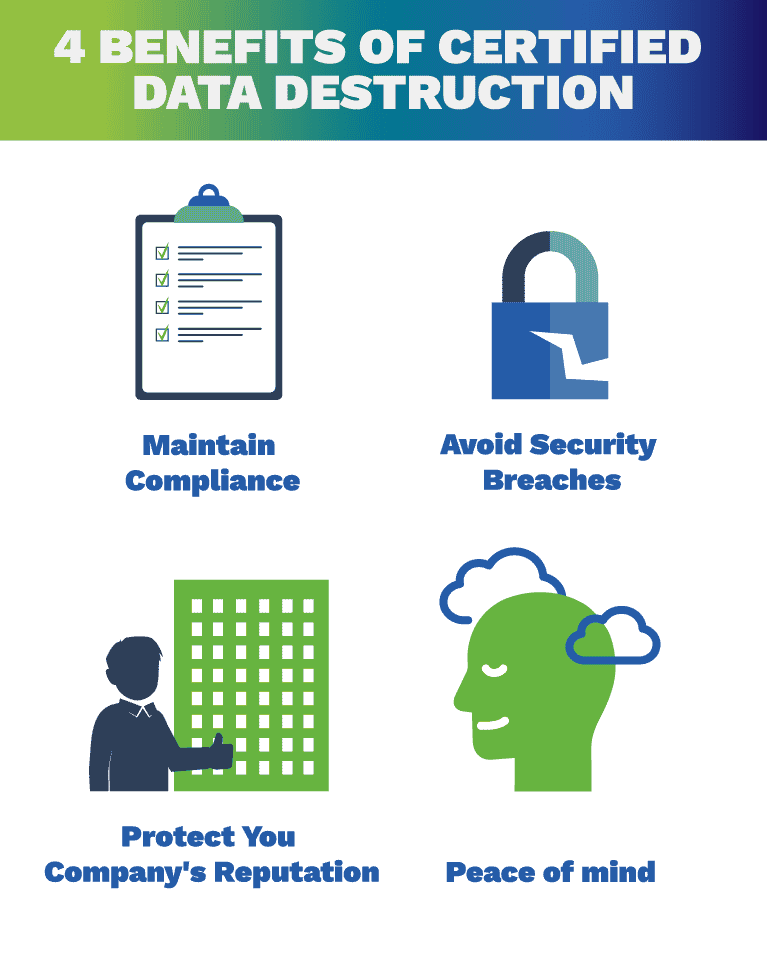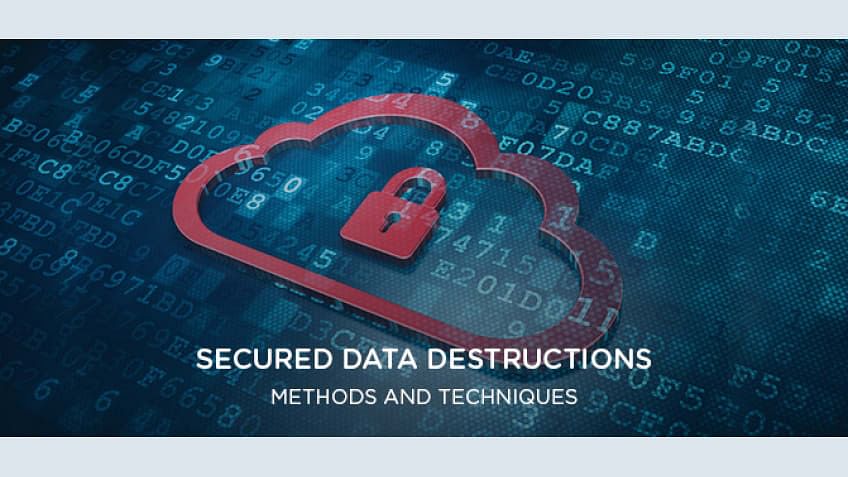Discovering the Relevance of Data Damage in the Context of Computer System Protection Solutions and Protecting Confidential Data
In an age where data breaches are significantly usual, the value of reliable data damage can not be overemphasized. When no longer essential, Organizations should take on strict steps to make sure that sensitive details is not just secured throughout its lifecycle but also emphatically removed. The techniques used for information eradication, paired with compliance to legal requirements, play a critical role in keeping privacy and trust. Nonetheless, the ramifications of these methods prolong beyond plain conformity, influencing a firm's reputation and functional integrity in the digital industry. What techniques can organizations apply to enhance their data destruction methods?
Understanding Data Damage
Information destruction is a critical element of computer safety and security that entails the long-term removal of data from storage space gadgets to avoid unapproved gain access to and potential information violations. In a significantly digital landscape, organizations face increased risks related to sensitive info being improperly accessed or exploited. Reliable data damage safeguards versus these risks, making certain that confidential dataâEUR" such as client details, copyright, and financial recordsâEUR" can not be recouped after disposal.
Comprehending the value of information damage expands past plain compliance with governing and lawful frameworks; it is necessary for preserving business honesty and trust. When data is improperly managed or improperly damaged, the effects can be extreme, consisting of economic loss, reputational damages, and legal responsibilities.

Methods of Data Obliteration

One prevalent method is information cleaning, which includes overwriting existing information with arbitrary patterns multiple times. This technique renders the original data irretrievable, making it a prominent option for companies looking for to protect secret information.
One more technique is degaussing, which makes use of an effective magnetic field to disrupt the magnetic domain names on storage tools, efficiently eliminating the data. This method is particularly efficient for magnetic media but is not relevant to solid-state drives.
Physical damage is an additional durable approach, including the shredding or crushing of storage tools. This technique warranties that information healing is basically impossible, making it suitable for very delicate details.
Last but not least, encryption can offer as a corresponding method to data removal. By encrypting information before deletion, organizations can include an added layer of safety and security, ensuring that even if residues are recovered, they remain hard to reach without the decryption trick. Each method ought to be selected based on the degree of information level of sensitivity and the details safety and security demands of the company.
Legal Conformity and Information Protection
Organizations must browse a complex landscape of legal requirements connected to information safety and security, especially after carrying out methods of information elimination. Various guidelines, such as the General Data Defense Law (GDPR) and the Medical Insurance Mobility and Accountability Act (HIPAA), impose rigorous guidelines on how organizations have to dispose and take care of of sensitive data. Failing to adhere to these policies can bring about significant legal effects, including substantial penalties and reputational damages.
Data damage procedures need to be carefully recorded to show compliance with applicable legislations and standards. This documents not only functions as proof of adherence to lawful obligations however likewise shows a commitment to protecting sensitive details. Organizations must likewise establish he said clear plans pertaining to information retention and destruction timelines, making certain that information is not held longer than needed.

Moreover, routine audits and assessments of information destruction methods are important to keep conformity and adapt to developing legal frameworks (data destruction). By proactively addressing lawful needs, companies can mitigate threats connected with data violations and show their commitment to information protection. Inevitably, focusing on legal compliance in information devastation procedures is not simply a governing commitment, however an essential element of a durable data safety technique
Influence On Company Credibility
The online reputation of a company can be significantly affected by its technique to information destruction and administration. In today's electronic landscape, where information breaches can happen at any moment, the failure to effectively get rid of delicate information can result in serious consequences. Organizations that improperly handle data damage danger exposing confidential consumer information, which not just violates privacy regulations but additionally erodes count on amongst clients and stakeholders.
A tarnished reputation can result in lowered client commitment, as clients end up being hesitant to engage with an organization that has shown carelessness in shielding their data. In addition, unfavorable promotion surrounding a data breach can have a long-term result, as prospective consumers may be hindered by the perceived absence of safety. This can cause a direct decline in earnings and market share.
Additionally, companies that focus on information damage as part of their security method can enhance their online reputation by showcasing their dedication to safeguarding delicate details. By taking on rigorous information monitoring techniques, organizations can not just reduce dangers yet also place themselves as trustworthy entities in their particular industries, consequently enhancing their total brand photo.

Best Practices for Secure Disposal
Applying best techniques for safe disposal of information is crucial for mitigating threats connected with data violations and making certain conformity with privacy laws. Organizations must adopt a comprehensive information disposal plan that describes procedures for both electronic and physical data damage.
For physical data storage space gadgets, such as hard disks, shredding or degaussing is suggested to stop information recovery. Additionally, companies should keep a chain of guardianship documents throughout the disposal procedure, making certain liability and traceability of disposed items.
For electronic information, utilizing software program that adheres to market criteria for data wiping is essential. This software program ought to overwrite existing information numerous times, making healing virtually difficult. It is also vital to confirm the effectiveness of the information devastation process through audits or third-party evaluations.
Training workers on safe disposal methods adds another layer of safety, as human mistake can frequently lead to information exposure. Consistently upgrading and reviewing disposal policies makes sure alignment with advancing policies and technical developments. By implementing these ideal methods, organizations can considerably lower the risk of unauthorized data accessibility and improve their total data protection method.
Verdict
In conclusion, information devastation is a basic facet of computer system security solutions that ensures the protection of secret information from unauthorized Full Article access. Implementing efficient techniques of data elimination, sticking to legal compliance, and recognizing the influence on organization credibility are crucial components of an extensive information protection technique. By adopting finest techniques for protected disposal, companies can cultivate trust fund with customers i was reading this and secure delicate information, inevitably adding to a more safe electronic landscape.
In a period where information violations are significantly usual, the value of effective information destruction can not be overstated.Information damage is a critical element of computer system security that involves the permanent removal of data from storage space tools to protect against unauthorized gain access to and possible information violations. Organizations must also develop clear plans concerning information retention and damage timelines, making sure that information is not held longer than required.
By proactively dealing with lawful requirements, companies can minimize risks connected with data violations and demonstrate their commitment to data safety and security (data destruction). Ultimately, prioritizing legal compliance in data devastation processes is not just a regulatory responsibility, however an essential aspect of a durable information safety strategy